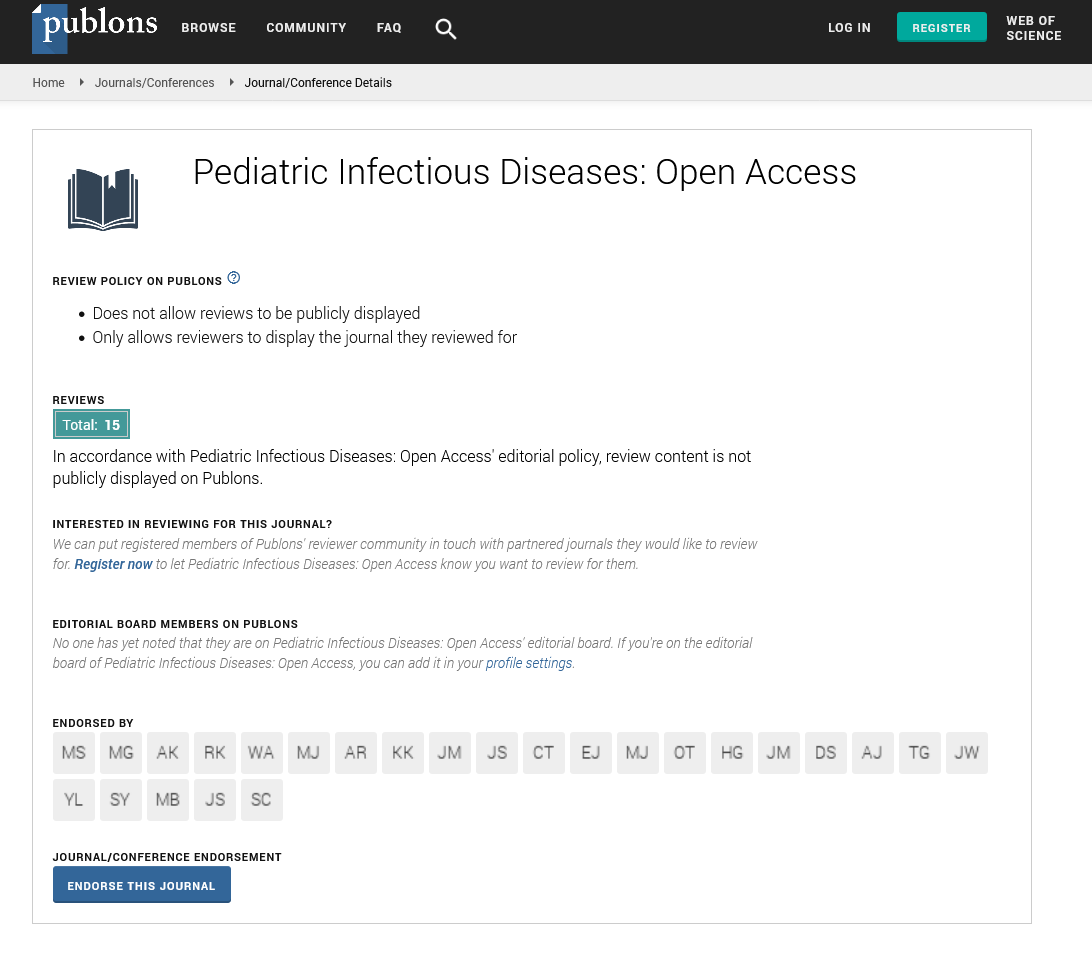Abstract
Shigella and Salmonella Infections are Associated with Markers of Environmental Enteropathy among Children under Five in Zambia
Background: Environmental Enteropathy (EE) is a complex syndrome involving intestinal disorder which has been observed among children living in resource-poor settings. We investigated stored stool samples collected from children under-5 for relationships between specific enteric pathogens and levels of stool EE markers: Calprotectin (CALP), Alpha-1-Anti-Trypsin (AAT) and Myeloperoxidase (MPO).
Methods: We used clinical data and stored stool samples collected prior to, and during the early months of widespread rotavirus vaccine implementation in Lusaka between July 2012 and October 2013 in Lusaka, Zambia. Children were considered eligible if they presented to the facility with symptoms of moderate-to-severe diarrhoea defined by having one or more of the following signs or symptoms: dehydration evidenced by sunken eyes, loss of normal skin turgor, or requiring intravenous resuscitation; dysentery (diarrhoea with blood in stool); or hospitalisation. We randomly selected 320 stool samples from the pool of 2,050 for analysis. We tested for 15 enteric pathogens using the Luminex XTag GPP panel and used commercial ELISA kits to assess the presence and levels of three known fecal markers of EE. We derived an EE score using a weighted sum of CALP, AAT, and MPO and applied a multivariable linear regression model to identify enteric pathogens independently associated with EE score.
Results: After excluding insufficient samples (24) and those with missing clinical data (62), a total of the 234 were available for analysis. Of these, 114 (49%) were female, 103 (44%) were asymptomatic for diarrhoea, 181 (77%) had two or more enteric pathogens detected in stool. Fifty-six percent (131/234) children were positive for Rotavirus, 43.2% (101/234) Enterotoxigenic E. coli, 36% (86/234) Giardia, 35% (82/234) Adenovirus and 34.2% (80/234) had Shigella. The mean EE score was 5 (SD=2.25). The median concentration of MPO, CALP, and AAT were 2560.4 ng/ml (interquartile range (IQR)=806.1, 6522.9), 79.1 ng/ml (IQR=0, 362.5), and 48.6 mg/ml (IQR=12.1, 139.5) respectively. Shigella (coefficient=0.92; 95%CI=(0.14, 1.70); p=0.022) and Salmonella (coefficient=0.83; 95%CI=(0.08, 1.58); p=0.030) were independently associated with increase in mean EE score and together with E. coli accounted for 68.5% of the predicted variance in EE score.
Conclusions: Salmonella and Shigella were found to be associated with EE and together with E.coli accounted for over two-thirds of variability in the EE score.
Author(s):
Michelo Simuyandi, Samue Bosomprah, Natasha Makabilo Laban, Katayi Mwila-Kazimbaya, Roma Chilengi and Caroline C Chisenga
Abstract | Full-Text | PDF
Share this

Google scholar citation report
Citations : 230
Pediatric Infectious Diseases: Open Access received 230 citations as per google scholar report
Pediatric Infectious Diseases: Open Access peer review process verified at publons
Abstracted/Indexed in
- Google Scholar
- China National Knowledge Infrastructure (CNKI)
- Cosmos IF
- Secret Search Engine Labs
Open Access Journals
- Aquaculture & Veterinary Science
- Chemistry & Chemical Sciences
- Clinical Sciences
- Engineering
- General Science
- Genetics & Molecular Biology
- Health Care & Nursing
- Immunology & Microbiology
- Materials Science
- Mathematics & Physics
- Medical Sciences
- Neurology & Psychiatry
- Oncology & Cancer Science
- Pharmaceutical Sciences


